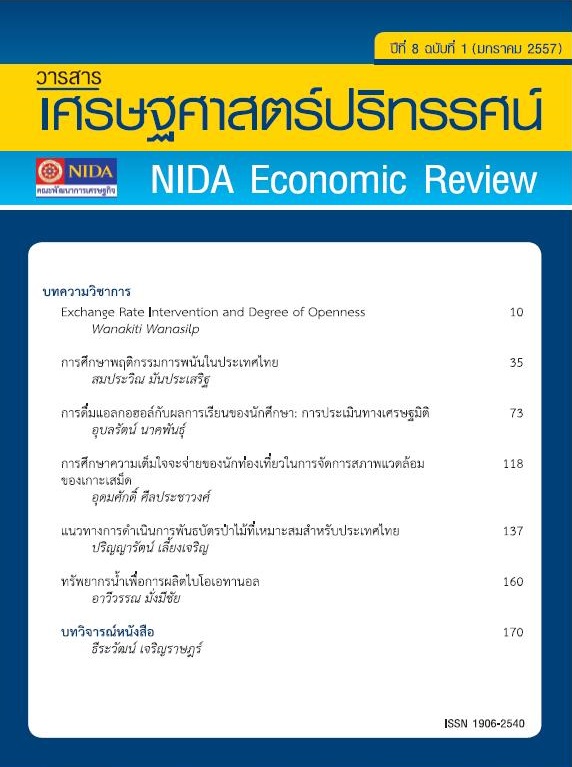The Implementation of Forest Bond in Thailand
Main Article Content
Abstract
This paper presents another approach as a new mechanism to increase the
forest area and the source of budget can be generated from beneficiaries
who get benefits from the forest conservation and restoration by issuing the
forest bond as a capital to drive this mechanism based on the principle of
Beneficiaries Pay Principle, which lead to sustainable forest conservation.
The study finds that a number of necessary condition for the success of
forest bond. First, the forest bond requires specific legislation and the new
organization. Second, forest bond needs to be focused on the concept that
human can live in the forest in a sustainable way by reforestation and
afforestation in degraded forest. The initial value of financial return of
reforestation over a 15-year bond in one million rai of forest areas can be
collected in several channels: revenues from a sustainable timber sector,
revenues from reduction of greenhouse gas emission in the forestry sector,
revenues from the water charge to the industries or key water users in the
dry season, government budget for flood and drought prevention, revenues
from carbon tax, revenues from tourism in protected areas, and revenues
from the government budget of reforestation and forest restoration. However,
the mechanism of the forest bond will fair to all parties involved and not
proposed replace the traditional measures, but rather proposed as a parallel
tool with other conservation policies.
Article Details
Copyright to published manuscripts becomes the property of the Graduate School of Development Economics, National Institute of Development Administration. Reproduction of all or part of a Development Economic Review (DER) article by anyone, excluding author(s), is prohibited, unless receiving our permission.
Disclaimer: Opinions expressed in articles published in this journal are those of the author (s) and do nto necessarily represent opinions of the Graduate School of Development Economics, National Institute of Development Administration. Trade and proprietary names are only for identification and not constitute our endorsement.
